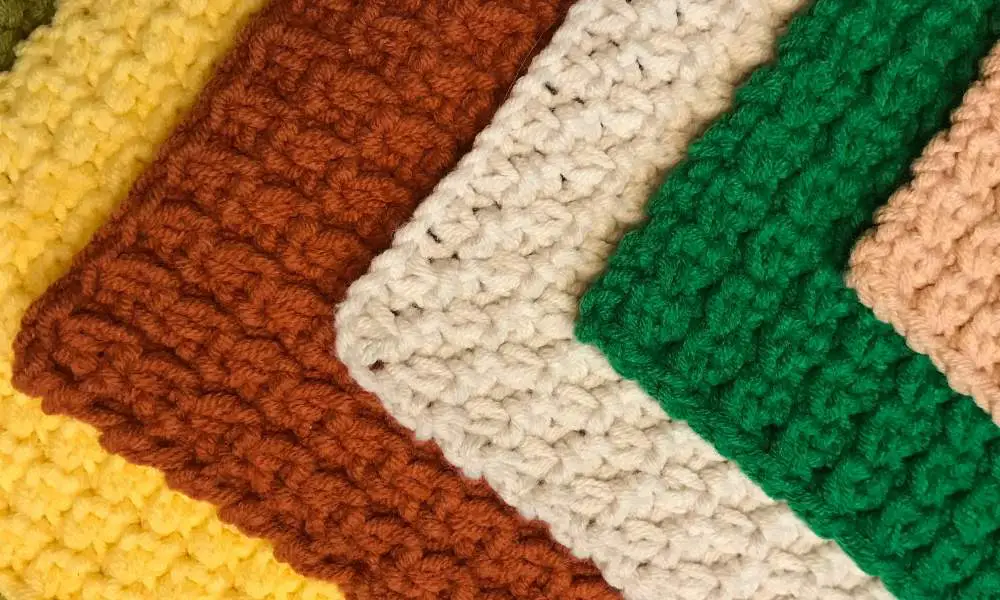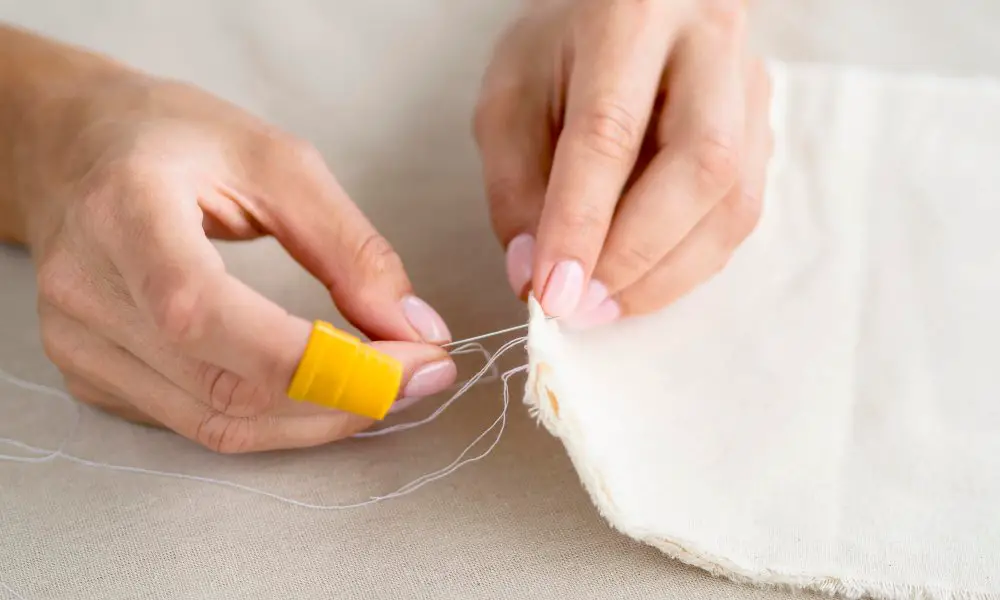Are you a fashion-forward frugalista plagued by pesky holes in your favorite shirts? Fear not, for we shall unravel the secrets of mending like a true sartorial savant!
When a beloved garment succumbs to the ravages of wear and tear, the sartorially savvy don’t shed sartorial tears—they channel their inner mending maven. This all-inclusive handbook gives you the skills to mend any size of clothing damage, allowing you to increase the longevity of your beloved wardrobe pieces – no matter how small or large the tear.
Identifying the Damage: A Prerequisite for Proper Patchwork
Before launching into your mending marathon, scrutinize the severity of the situation. Evaluate the hole size and the fabric’s nature to triage your repair mission.
Tiny Tears vs. Gaping Gashes
Diminutive pinholes and small holes may only require a deft touch of fusible webbing or fabric glue. However, more extensive lacerations necessitate more substantive patchwork or creative visible mending techniques.
The Fabric Factor: Knits, Wovens, and Their Nuances

The weave of the fabric will dictate your mending methodology. Knit fabrics, with their stretchy, interlocked loops, demand a distinct approach compared to the rigid, intersecting threads of woven fabrics like cotton or linen.
Assembling Your Arsenal: Tools of the Mending Trade
To emerge victorious in your battle against holes, you must amass an arsenal of tools ranging from the classic to the cutting-edge.
The Sewing Machine’s Starring Role
For larger holes and tear repairs, a trusty sewing machine is indispensable. Its precise stitches, from straight to zig-zag, will reinforce the mended area, ensuring longevity.
Hand-Stitching Essentials for Discreet Detailing
When discretion is critical, turn to hand-stitching for invisible repairs. A keen eye, nimble fingers, and an assortment of needles, thread, and thimbles will allow you to blend your mending seamlessly into the fabric’s motif.
Mastering Mending Techniques for Minuscule Mishaps
Minimal damage calls for minimal intervention—a philosophy celebrating the art of subtle, almost invisible mending.
Fusible Webbing: The Seamster’s Subtle Solution
This lightweight, adhesive-backed fusible bonding web is a godsend for patching small holes in woven fabrics. Simply position the webbing behind the tear, apply heat, and watch as it fuses seamlessly with the garment.
Fabric Glue: A Quick Fix for the Time-Crunched
In a pinch, fabric glue can be a handy ally for minor repairs on clothing. However, this temporary solution may stiffen the fabric or lead to unsightly residue over time.
Tackling Larger Lacerations with Poise and Panache
For more substantial damage, it’s time to unleash your inner artist and indulge in visible mending—a delightfully imperfect trend that celebrates flaws as features.
The Art of Visible Mending: Embellishing Imperfections
You can transform an eyesore into an eye-catching embellishment with vibrant threads and intricate stitching. Sashiko, a traditional Japanese mending technique utilizing a simple running or decorative satin stitch, is a stunning example of this artistry.
Patching with Pizazz: Contrasting Fabrics for Flair
Who says patches must blend in? Selecting a contrasting fabric with a complementary hue or captivating print allows you to breathe new life into a garment while making a bold sartorial statement. Fashion designers often employ this technique to create one-of-a-kind pieces.
Finishing Flourishes: Elevating Your Mended Masterpiece
With your mending mission accomplished, it’s time to add the final flourishes that will elevate your repair to a work of wearable art.
The Alchemy of Seam Sealing
A few well-placed stitches along the seam allowance can reinforce the mended area, prolonging the life of your repair while preventing future unraveling of loose threads.
Lint-Free Luxury: Grooming Your Garment to Perfection
After your mending marathon, a thorough grooming session is essential. Gently remove any lingering lint or loose threads, and consider a light pressing on an ironing board with a protective layer of parchment paper to restore the fabric’s polished appearance.
FAQs
Can I use a regular sewing needle for hand-stitching repairs?
While a standard sewing needle can work in a pinch, using a specialized hand-sewing needle or a needle threader can make the process smoother and more precise, especially when working with smaller holes or delicate fabrics.
What’s the best way to match thread and fabric for invisible mending?
For seamless repairs, find a thread color that closely matches the fabric’s hue and undertone. You can also use embroidery floss or split threads from sewing thread to create a finer, less visible stitch.
How do I prevent fraying around the mended area?
Applying a small amount of fabric glue or using an embroidery hoop to stabilize the fabric can help minimize fraying. A zig-zag or satin stitch around the raw edge can reinforce and secure the area.
Can I use fusible webbing on knit fabrics?
Fusible webbing is generally better suited for woven fabrics, as the heat and adhesive can potentially distort or damage the stretchy fibers of knits. Consider using a stabilizing product specifically designed for knits or opt for hand-stitching techniques for knit garments.
Conclusion
In this ever-evolving world of fashion renewal and sustainable chic, conquering the art of hole mending is a skill that will serve you well. With these techniques in your sartorial arsenal, you can breathe new life into your garments, reducing waste while indulging your creative flair. But we’ve merely scratched the surface—what other mending mysteries would you like us to unravel? In the comments below, share your visible mending triumphs, DIY projects, or any burning questions!
***
Main image: freepik




